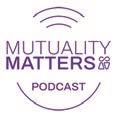Jesus and Women



Unhiding






















Unhiding


















Unhiding the Women in the Parable of the Prodigal Son
Jesus’s first-century audience would have understood women as being present even if Jesus does not seem to name them.
By Charel du ToitJesus Called Her "Woman"
Jesus says “woman” to get the attention of a female character and to signal that he is about to say something important.
By Margaret MowczkoJuxtaposing related laws in the Torah with some of the “You have heard” sayings reveals important implications for women.





 By Michael Huffman
By Michael Huffman
Great Love: Reflections on Jesus's Inclusion of the Unnamed Woman
Jesus allowed himself to be touched by the unnamed woman, came to her defense, and pronounced her forgiven by God.
By Grace Amarachukwu ObaigbonaResurrection Revelations: How Jesus Honoured Women and Men and Still Does
Jesus entrusted the good news of his resurrection to both women and men. They should be empowered to do so, still.
By Jenny SandersMutuality is published quarterly by CBE International, 122 W Franklin Ave, Suite 218; Minneapolis, MN 55404-2451.
We welcome your comments, article submissions, and advertisements. Visit cbe. today/mutuality






All Scripture quotations, unless otherwise indicated, are taken from the 2011 revision of the Holy Bible, New International Version®, NIV®. Copyright © 1973, 1978, 1984, 2011 by Biblica, Inc.™ Used by permission. All rights reserved worldwide.
Advertising in Mutuality does not imply organizational endorsement. Please note that neither CBE International, nor the editor, nor the editorial team is responsible or legally liable for any content or any statements made by any author, but the legal responsibility is solely that author’s once an article appears in Mutuality

CBE grants permission for any original article (not a reprint) to be photocopied for local use provided no more than 1,000 copies are made, they are distributed free, the author is acknowledged, and CBE is recognized as the source.

Jesus Loves Me, a Woman, This I Know
Rediscovering the Towering Faith of Mary Magdalene
Editor: Sarabeth Ng
Graphic Designer: Margaret Lawrence Publisher/President: Mimi Haddad
Mutuality vol. 29 no. 4, Winter 2022
Cover design by Margaret Lawrence Mutuality (ISSN: 1533-2470) offers articles from diverse writers who share egalitarian theology and explore its intersection with everyday life.



When we were selecting our magazine themes for 2022, I was surprised to discover we had never had a Mutuality issue about Jesus. We’ve covered Paul at length (see the Spring 2021 issue “Making Peace with Paul”). We had an issue about Mary a few years ago (see the Winter 2019 issue “Rediscovering Mary”). We’ve tackled Genesis (Winter 2014), Old Testament women (Summer 2013), New Testament women (Winter 2016), and so many other vitally important people and topics.
Surely Jesus has been active and present throughout all of our previous Mutuality issues. With this Winter 2022 issue, though, we’re bringing Jesus front and center. My prayer is that this issue will help you develop a deeper, more robust theology that values women, knowing that Jesus is our ultimate model of women’s biblical equality.
I don’t know about you, but I love in-depth discussions about women’s biblical equality. I may not have studied Greek or Hebrew at a graduate or even collegiate level, but my word-loving self loves reading various scholars’ writings on often-controversial words like kephalē, ezer kenegdo, authenteō, and diakonos. These scholars’ work is so important to our biblical understanding of women and men in the world. They make a tangible difference in how women are treated in their churches and homes.

Sometimes, though, I wonder if we focus too much on all the little nuances, forgetting the bigger message: Jesus Christ, the Son of God, has come, died, and risen so that all of us may live! (Yes, women, too!)
Do you have the same level of passion for figuring out how Jesus perceived women as you do for figuring out how Paul viewed women? Have we become too laserfocused on Paul’s teachings about and interactions with women? I can hear some readers now, protesting that Jesus was never as explicit or expansive in his teachings for women as Paul was. Plus, Paul’s writings are the ones most commonly used to beat women into unreciprocated submission to the men around them. Even I sometimes find myself acting as if the only teachings on women that matter are the ones in Paul’s letters.
Jesus’s teachings on women may not be obvious to us modern readers. Our familiarity with Jesus’s teachings perhaps leads us to believe we’ve gleaned all we can from them. Yet we as egalitarians are firmly committed to reading and interpreting all of the Bible within its culturalsocietal context, to the best of our ability. We spend so much time teasing out Paul’s writings to better understand what he was truly saying about women. Let’s give Jesus’s teachings the same amount of devoted attention.
As we use God’s good gifts of curiosity, wisdom, language, translation, and deduction to discover the exact meaning of Greek and Hebrew words as well as Paul’s letters, let’s not forget our firm foundation of Jesus Christ’s love and redemption. This issue of Mutuality ties our egalitarian scholarship to the Rock of our Christian faith. In our discussions on every little nuance from Eden to Paul, we must occasionally pause to appreciate the uniting foundation beneath all of our feet. Jesus’s life and teachings guide our commitment to the full equality of women and men in the home, church, and world.
Jesus taught women. Jesus freed women. Jesus commissioned and sent women. Jesus loved women. The articles in this issue will, I pray, help us discover just how much Jesus was for women.
FromThe articles in this issue will, I pray, help us discover just how much Jesus was for women.By Charel du Toit


My mother was the kindest, most loving person you would ever meet. After spending only a few moments with her you might perhaps forget her name or her face, but you would absolutely know that she loved you. She was a small woman with a big heart, and in the summer of 2018 her small body could not fight her disease any longer and she went away, she died. I like to tell people that her body could not contain the love inside her any longer, so she had to go to a place that could handle the vast amount of love she had to give.
Four years on and people have begun to forget her, forget her love. Her voice has become more and more hidden. It was this earth-shattering realization that


prompted me to change my entire life, especially my academic research, and dedicate my life to unhiding the forgotten and, with time, omitted voices of women in the parables.













































The parables of Jesus, and the entire Bible for that matter, have always been prone and susceptible to patriarchal and androcentric interpretations. Many times, as twenty-first century readers, we only see men and their narratives, voices, roles, and importance. This was not strange or uncommon in first-century Palestine. It was a male-centric society. The roles and actions of men were seen as more important than












.
.


. we just have to read the ��rst line of the parable in our Bible: “There was a man who had two sons” (Luke 15:11). That sentence immediately implies a wife, or woman. Who else could have given birth to those two sons? So there is a mother somewhere in that story.
those of women and, therefore, received more attention. Furthermore, men often were educated to read and write, a privilege precious few women had. This led to the vast majority of ancient texts, and basically all biblical texts, being authored by men and discussing topics and characters that men would deem as important.
However, in the background of these texts, and many times in the foreground but merely omitted, were women actively living their lives. The lives of these women were of vital importance and, as women’s historian Gerda Lerner would argue, there can only be an accurate and complete picture of the recorded past if women are included in our history.1 After all, women make up half of the population. To ignore the contributions of women in history is to ignore half of all recorded history.
To learn how to see the women in the parables of Jesus, let’s look at the parable of the prodigal son. You might think, “There are no women in that parable.” But there are! They are everywhere, and I argue they are crucial voices that need to be “unhidden.”2 Doing so gives us a more accurate picture of recorded history. Plus, it helps more people read biblical texts and understand women as active members of biblical narratives like the parables.
The prodigal son is arguably the most famous parable we all know. It has even bled into secular society. Many people exclaim, “The prodigal son returns!” without thinking of the Bible or Jesus.
So, you ask, where are the women in this parable? Well, without even applying one second of social-scientific criticism or complex methodological exegesis (which most everyday readers don’t have the time or resources for anyway) we just have to read the first line of the parable in our Bible: “There was a man who had two sons” (Luke 15:11). That sentence immediately implies a wife, or woman. Who else could have given birth to those two sons? So there is a mother somewhere in that story.
Moreover, the wife might have had daughters and not only two sons, as is mentioned in the parable. If






the eldest son was married, his wife would also be a part of the household. Seeing that daughters were married as early as twelve years old, the eldest son’s wife might have already had her own children, some of whom might have been daughters. This paints a much more diverse and, perhaps, accurate picture of what this family in the parable looked like and how wives, daughters, granddaughters, female slaves, and female servants were very present and important.
In the first-century Mediterranean, women were often associated with the house (oikos in Greek). They would take care of the tasks of the household such as preparing food, making clothes, and taking care of children. This would also mean that when a first-century person, such as the audience of Jesus’s parables, thought of the “oikos,” they would immediately think of women.3 Although the word “house/oikos ” is only mentioned once by name in the parable (see Luke 15:25) it seems easily imaginable that the house to which the son returns would undoubtably conjure images of a home in both ancient and modern hearers. In fact, some of the most important scenes in this narrative play out around the house, with many scenes not being possible without the presence of women.
In the ��rst-century Mediterranean, women were often associated with the house (oikos in Greek). . . . This would also mean that when a ��rstcentury person, such as the audience of Jesus’s parables, thought of the “oikos,” they would immediately think of women.
Think of the feast that is prepared in honour of the returning son. Who would prepare that food, host the feast, and serve the dishes? Women would. These women, who were often slaves, were critically important because they had a direct responsibility to enforce dietary and purity laws and had to follow the correct observances of the rules governing cultic cleanliness (especially important if you think about the slaughtering of a calf in ancient Jewish culture). 4 This draws our attention not only to the importance of these women but also points to their honour, an important value in the first-century Mediterranean.
Moreover, think of the father waiting for his son. The text tells us that he is “filled with compassion” when his son approaches in Luke 15:20. It is very possible that the father spent time with his wife in the house during his son’s absence. The first-century historian Josephus recounts how women were known to play an active role in matters of inheritance and the reconciliation of family members.5 Strong mother figures in the firstcentury Mediterranean commanded a certain level of respect and obedience from their family members and would often fulfil a central and pivotal role in their household.6 It’s possible, if not very likely, that the father’s heart was changed by his wife and contact with her.7 We even have a letter in the BGU III 846 papyrus (written between 127–126 BC) of a prodigal son begging to be reconciled with his mother after he has exhausted his resources. He admits to his mother that he has learned his lesson and then confesses that he has sinned, similar to what the prodigal does in Luke
15:18. Although there might not be a direct connection between the papyrus and the biblical parable, the text provides an interesting alternative, helping us glimpse a different perspective present in the first century that we would otherwise miss.







We can then imagine that the prodigal son does not return to a feast that his father has prepared, but rather to a feast prepared by women. Neither does he return to his father’s arms, but he returns to the arms that his mother has prepared for him.
The first-century audience of Jesus would have understood these women as present even if Jesus does not seem to explicitly name them in the parable. So, if the first listeners of Jesus would hear the hidden voices of women in his parables, why do we in the twenty-first century still hide those voices in our books, commentaries, and sermons? Just like my mother, who only passed away a few years ago, the women who left their legacy thousands of years ago deserve to be heard.
Charel du Toit currently works as a part-time lecturer in the Department of New Testament and Related Literature at the University of Pretoria, South Africa, while pursuing a joint PhD from the University of Pretoria and the Vrije Universiteit Amsterdam. The focus of his research is to unhide the voices of women in the parables of Jesus.

1. Gerda Lerner, The Creation of Patriarchy (New York: Oxford University, 1987), 4.
2. See Charel D. Du Toit, “A ‘Realistic’ Reading as a Feminist Tool: The Prodigal Son as a Case Study,” HTS Teologiese Studies / Theological Studies 78, no. 4 (2022): 1–7, https://doi.org/10.4102/hts.v78i4.7413. See also Charel D. Du Toit, “The Friend at Midnight: A ‘Realistic’ reading as a feminist tool,” Verbum et Ecclesia 43, no. 1 (2022): 1–7, https://doi.org/10.4102/ve.v43i1.2633.
3. Monika Trümper, “Gender and Space, ‘Public’ and ‘Private,’” in A Companion to Women in the Ancient World , eds. Sharon L. James and Sheila Dillon (Walden, MA: Wiley-Blackwell, 2012), 290–291.
4. Ross Shepard Kraemer, Her Share of the Blessings: Women’s Religions Among Pagans, Jews, and Christians in the Greco-Roman World (New York: Oxford University, 1992), 143.
5. Josephus, A. J., 15.7.29.
6. Julian Pitt-Rivers, “Honour and Social Status,” in Honour and Shame: The Values of Mediterranean Society, ed. Jean G. Peristiany (Chicago: University of Chicago, 1966), 65–71.
7. Richard L. Rohrbaugh, “A Dysfunctional Family and Its Neighbors,” in Jesus and His Parables: Interpreting the Parables of Jesus Today, ed. V. George Shillington (Edinburgh: T&T Clark, 1997), 147.
if the ��rst listeners of Jesus would hear the hidden voices of women in his parables, why do we in the twenty-��rst century still hide those voices in our books, commentaries, and sermons?
It is a joy to read the interactions in the Gospels where Jesus speaks with a woman. One aspect that can dampen this joy for some readers is that Jesus sometimes addresses a female character simply as “woman.”
In English-speaking societies, it’s impolite to address a woman this way. It sounds abrupt, cold, and disrespectful. From everything we know about Jesus, however, we can assume that he wasn’t being rude, especially as “woman” often occurs in statements where he says wonderful things.
The Canaanite Woman
Jesus addresses a female character directly as “woman” (Greek: gynai) seven times in the Gospels.1 The first occurrence is in Matthew 15:21–28. This passage is an account of Jesus’s encounter with a Canaanite woman who is desperate because her daughter is su�fering from demon possession.
The woman is portrayed as possessing tenacity and wit, and Jesus praises her. He says, “ Woman, you have great faith” (v. 28 CEB). In the next phrase we are told, “And right then her daughter was healed.” Jesus rewarded the woman's faith and perseverance.
While his initial silence towards her would have been disconcerting and may have been perceived as rudeness, there is no hint of disrespect when Jesus does speak to her and calls her “woman.”
The second occurrence of “woman” ( gynai ) is in Luke 13:10–17. In this story, Jesus is in a synagogue on the Sabbath. There he sees a woman who was unable to stand straight because she had been tormented by an evil spirit for eighteen years.
In front of those present, Jesus calls her over to him and tells her: “Woman, you are set free from your sickness” (v. 12). When he placed his hands on her, she instantly stood up straight and praised God. We can imagine the enormous relief and joy she felt.
Later in the passage, Jesus defends his actions to the angry synagogue leader and poses a rhetorical question, “Isn’t it necessary that this woman, a daughter of Abraham, bound by Satan for eighteen long years, be set free from her bondage on the Sabbath day?” (vs. 16). Jesus’s words express regard, sympathy, and care for the woman.
There are a few conversations in John’s Gospel where Jesus addresses a woman as “woman” ( gynai). We misunderstand his tone if we think this is a severe word when, in fact, it could convey both esteem and a�fection. Mary the mother of Jesus appears only twice in John's Gospel, and in both passages Jesus calls her “woman.”
When Mary tells Jesus that the wine had run out at the wedding at Cana, Jesus replies with, “Woman, what does that have to do with me? My time hasn’t come yet” (John 2:4). While his response doesn’t sound positive in English, Mary is unfazed, and she tells the servants at the wedding to do what Jesus tells them. And water is turned into fine wine. Jesus revealed his glory through this sign, the first sign recorded in John's Gospel, and as a result his disciples trusted in him.
A couple of years later, while hanging on the cross, Jesus transfers the responsibility of his mother’s care to the beloved disciple. Despite experiencing unimaginable pain and profound degradation, Jesus makes sure Mary will be looked after.
When Jesus saw his mother and the disciple whom he loved standing nearby, he said to his mother, “Woman, here is your son.” Then he said to the disciple, “Here is your mother.” And from that time on, this disciple took her into his home. (John 19:26–27)
“Woman” also occurs in the lengthy dialogue between Jesus and the Samaritan woman recorded in John 4:7–26. In response to her questions and statements, Jesus tells this spiritually thirsty woman about his gift of “living water,” and he reveals to her that he is the Messiah. Towards the end of the conversation, Jesus speaks to her about true worship. By addressing her directly here, he focuses attention on his words.
Jesus said to her, “Believe me, woman, the time is coming when you and your people will worship the Father neither on this mountain nor in Jerusalem. You and your people worship what you don’t know; we worship what we know because salvation is from the Jews. But the time is coming—and is here!—when true worshippers will worship in spirit and truth . . ." (John 4:21–23)
Jesus taught important, life-giving theology to the Samaritan woman who then went to tell others about him.
The woman caught in adultery in John 8 is the next to be called “woman” by Jesus. He is in the temple teaching, with people gathered around him, when some experts on Jewish law and some Pharisees bring in a woman who has committed adultery. They make her stand in the centre of the crowd. In this tense and humiliating scene, they use her, hoping to trap Jesus into saying something that will incriminate him.
The men ask Jesus, "In the Law, Moses commanded us to stone women like this. What do you say?” (v. 5). But Jesus is not playing their game, and he doesn't humiliate the woman further by looking at her. He stoops down and begins writing in the dust on the ground with his finger.
After initially ignoring them, Jesus stands up and says, “Whoever hasn’t sinned should throw the first stone” (v. 7). He then continues to ignore the men. The woman’s accusers leave, one by one, but she is still standing in the middle of the gathered crowd. Jesus then stands up and speaks to her. He asks two rhetorical questions, “Woman, where are they? Has no one condemned you?” (v. 10). Then he goes on, “Neither do I condemn you. Go, and from now on, don’t sin anymore” (v. 11).
This woman had broken the law of Moses. She had committed adultery, which was a major transgression in the first century, but Jesus doesn’t rebuke or reprimand her. There is no sign of disrespect from him towards the woman even in this story.
Mary Magdalene is the last person in the Gospels to be addressed as “woman” by Jesus. John 20:11–18 gives an emotional account of her standing alone at the empty tomb. She is weeping because she believes someone has stolen Jesus’s body. Two angels, which are seated in the tomb where the body had been, also address Mary Magdalene as "woman" when they ask, “Woman, why are you crying?” (v. 13). Again, there is no hint that this kind of address was curt, cold, or impolite.
Jesus says “woman” to get the attention of a female character and to signal that he is about to say something personal or weighty, or both.
Mary turns and sees Jesus alive but mistakes him for a gardener. Jesus speaks to her and asks, “Woman, why are you crying? Who are you looking for?” (v. 15). In the next verse he says her name, "Mary," and she then realizes the man is Jesus, her beloved rabboni (“teacher”). She holds him, but Jesus gives her a commission instead. So Mary goes and enthusiastically tells the other disciples, “I have seen the Lord" (v. 18).
In all these narratives, Jesus says “woman” to get the attention of a female character and to signal that he is about to say something personal or weighty, or both. Rhetorically, “woman” adds emphasis and focus to his statements. Some of these statements accompanied healing, others were words of comfort or they conveyed theology.
It is evident that Jesus cared for these women and treated them with respect. Addressing them directly as “woman” was a mark of this respect. We follow his example when we honour women and address them in polite, culturally appropriate ways. And like Jesus, we can speak life-giving words of praise, encouragement, comfort, and healing.
Margaret Mowczko lives north of Sydney, Australia. She has an MA in early Christian and Jewish studies from Macquarie University, and she writes on the subject of Christian egalitarianism for her website margmowczko.com
1. “Woman” is an accurate translation of the Greek noun gynai that occurs in these conversations. This word is the singular vocative form of gynē (“woman”). The singular vocative form is used when someone is directly addressing a person. Liddell, Scott, and Jones, in their exhaustive lexicon of ancient Greek (LSJ), note that the vocative form of gynē can be used as “a term of respect and affection.” Bauer and Danker, in their lexicon (BDAG) which is recognised as one of the best for New Testament Greek, write that the vocative gynai “is by no means a disrespectful form of address.”

While many faith-based organizations desire to have women in positions of leadership, they still fail to embody a culture that invites and celebrates gender equity. Offering practical steps for leadership teams, board members, and managers, Beth Birmingham and Eeva Sallinen Simard identify organizational changes that will create a belonging culture.

“A thoroughly researched, courageous critique of organizational practices and their impact on women and human flourishing. A must-read for women in Christian organizations.”
–MIMI HADDAD,president of CBE InternationalBy Michael Huffman
Jesus’s Sermon on the Mount contains six sayings that begin with, “You have heard that it was said.” In these sayings, Jesus follows a standard rabbinical way of expounding upon the Torah, the first five books of the Bible. On first reading, these sayings may not appear to have anything to teach us about how the gospel in��uences our understanding of women’s biblical equality. However, when we consider them in juxtaposition to related laws in the Torah, we find that the third, fourth, and fifth of these sayings have important implications for women’s biblical equality.
It was also said, “Whoever divorces his wife, let him give her a certificate of divorce.” But I say to you that anyone who divorces his wife, except on the ground of sexual immorality, causes her to commit adultery, and whoever marries a divorced woman commits adultery. (Matt. 5:31–32 NRSVue)
In the third “You have heard” in Matthew 5:31–32, Jesus alludes to Deuteronomy 24:1–4, which is a small collection of laws related to divorce that make a distinction between women’s and men’s respective legal rights. It allows a husband to divorce his wife because of “something objectionable about her,” yet we see no parallel provision for a wife in the same situation. This law gives men rights that it does not give to women.
Further, I’d like us to consider that Jesus seems to be speaking to men in his comments regarding adultery and divorce in the Sermon on the Mount. In the previous saying in Matthew 5:27–30, he equates sexual lust for “a woman” with committing adultery, indicating he has primarily men in mind. Likewise, in this third saying, it seems that Jesus intends to address men, referring only to a husband seeking to divorce his wife, not vice versa. We might think initially that Jesus is perpetuating a discriminatory approach to divorce that gave men rights over and above those given to women. Or we might think women need to simply read themselves into the text. But I think we can learn something else here.
By any standard of his day, Jesus’s expansion on Deuteronomy 24:1–4 severely limits men’s access to divorce. Today, we equate liberal divorce rights with greater legal equality between women and men. So it might look like Jesus’s position on divorce runs contrary to egalitarian values. But if Jesus had simply advocated for more liberal divorce laws on the basis of Deuteronomy 24, he would have been arguing for the expansion only of the rights of men. The truth is, the divorce law in Deuteronomy 24, if taken at face value, leaves ample room for liberal interpretation—but only for the bene��t of men.
Instead of advocating for a more liberal interpretation, Jesus suggests an unprecedented restriction on divorce. It’s easy for us to miss that, in doing so, he’s restricting only men, not women. If Jesus’s peers had taken him seriously, the effect would have been equalizing for women and men. The Torah makes a very limited provision for a wife to leave a neglectful husband in Exodus 21:11. Jesus, likewise, suggests an extremely limited scenario in which a husband might seek a divorce from his wife.
Today, Christians with questions about the morality of divorce in their lives often consult Jesus’s third saying in Matthew 5:31–32. While Jesus’s words are certainly still relevant, we should recognize the difference between what we’re asking now and what Jesus’s questioners were asking then. As an American, I assume that women and men have basically the same legal divorce rights. But this was emphatically not an assumption that Jesus or his listeners could have shared with me.
In Jesus’s day divorce was controlled almost exclusively by men. While it is true that Deuteronomy 24:1–4 and Exodus 21:11 provide some protections for women, those protections are only for women after the divorce has occurred. In other words, the Torah does not give explicit permission for a woman to use divorce as a way of escape from abusive, neglectful, or unfaithful husbands—which is one reason many of us today believe access to divorce is necessary for women's safety and welfare.
When we understand that Jesus is addressing primarily men in Matthew 5:27–32, we see that he isn’t providing a new blueprint for divorce law, but is instead exposing the inadequacy of the questions his audience is asking. They want to know what they can get away with— what is allowed and what is not. But Jesus hones in on something much more fundamental. The right question, Jesus is saying, is not, “What can I get away with? What are my limits?” but, “What is the purpose of my sexuality, my marriage, and my other human relationships? And how can I live in harmony with that purpose?” That is a question for men and women, married and unmarried, alike!
Having said that, we should avoid overly privatizing Jesus’s “You have heard” sayings. His words are not merely of personal value. They have public implications. And in this case, those implications touch women’s status in marriage directly. Counterintuitive as it may seem, by suggesting a highly restrictive approach to divorce for husbands , Jesus gestures toward an understanding of marriage in which husbands and wives stand on equal ground.
Again, you have heard that it was said to those of ancient times, “You shall not swear falsely, but carry out the vows you have made to the Lord.” But I say to you: Do not swear at all . . . . Let your word be “Yes, Yes” or “No, No”; anything more than this comes from the evil one.
(Matt. 5:33–37)
At the beginning of this fourth saying, Jesus seems to be alluding to three passages in the Torah— Leviticus 19:12, Deuteronomy 23:21, and Numbers 30:2. Leviticus 19:12 and Deuteronomy 23:21 are, like the Ten Commandments, simply commands, outlining no consequences of their disobedience. However, Numbers 30:1–16 is a detailed collection of laws describing the legal responsibilities for people who make vows. What stands out immediately in this passage is the way that women and men are treated differently.
To summarize the differences:
• The vow of a man, a widow, or a divorced (and single) woman was binding without exception. 1
• The vow of a married woman was only binding if her husband allowed it to be.
• The vow of a single woman who had never married was only binding if her father allowed it to be.
In other words, the vows of married or never-wed women were only considered binding if validated by their male authority figures.
Jesus, however, forbids formal vow-making here in Matthew 5:33–37. His approach to the issue of vowmaking, thus, becomes immediately relevant to the question of biblical women’s equality. Notice that Jesus does not merely command his followers to always tell the truth. He also tells them to refrain from making any vows at all! What was once a law that subordinated female responsibility under that of a male—whether a father or a husband—is replaced by Jesus’s command not only to always tell the truth but also to abstain from all vow-making. Now, the distinction between the relatively greater strength of a man’s vow over a woman’s disappears. Jesus wants his listeners to abandon the making of vows altogether. Instead, he commands them to tell the truth and keep their promises always. By logical implication, we might add, “whether you’re a man or a woman.”
Many of us have heard teachings about the importance of a woman’s having a “male covering.” The laws of Numbers 30:1–16 can be (and certainly have been) used to support this. However, by contrast, we cannot use Jesus’s comments on vow-making in Matthew 5 to support that idea. Instead, Jesus seems to teach that every person who bears God’s image is equally responsible before God to tell the truth and to keep promises.
The distinction between the relatively greater strength of a man's vow over a woman's disappears.
You have heard that it was said, “An eye for an eye and a tooth for a tooth.” But I say to you: Do not resist an evildoer. But if anyone strikes you on the right cheek, turn the other also, and if anyone wants to sue you and take your shirt, give your coat as well. (Matt. 5:38–40)
Jesus’s treatment of the principle of “an eye for an eye” in his fifth saying deserves its own extended discussion. But for now, let’s focus on verse 40, where Jesus says, “[A]nd if anyone wants to sue you and take your shirt, give your coat as well.”
Once again, our first reading of this passage doesn’t reveal any answers to our questions about Jesus’s teaching on issues of women’s biblical equality. However, historical evidence suggests that women were largely restricted from participating in court proceedings relative to men in the time of Jesus, both in Jewish and Roman contexts. 2 This meant that a woman depended on the men around her for vindication if she were accused of wrongdoing, whether justly or falsely.
When Jesus, therefore, commands a different approach to dealing with those who seek to use legal procedures as a means of oppression, he is in effect placing women and men on the same level. Some of us, perhaps, would rather see Jesus advocating outright for the equal rights of women. But instead, he calls for the voluntary humiliation of his male disciples. They are, in effect, commanded to join women in their place of vulnerability.
While women did not have the same legal resources as men did, both women and men equally had the means to turn the other cheek, to give up their coat, and to go the extra mile. The power that Jesus offers to both women and men is their own humiliation. Such humiliation serves as a judgment on oppressors. As Peter would later write, “Maintain a good conscience so that, when you are maligned, those who abuse you for your good conduct in Christ may be put to shame” (1 Peter 3:16). In fact, there is a sense in which a man’s refusal to exploit his own legal prerogatives, and to thereby limit himself to the use of only those resources available to the women around him, can serve as a sign of the humiliation of Christ (see Phil. 2:5–13).
Mutuality cannot work without significant changes in the thinking, habits, and desires of men. If men do not also change, women will never be able to fully answer the call for the welcome of women’s voices, ministry, and leadership in the Christian community. When Jesus speaks to men specifically, as in the Sermon on the Mount, this does not weaken an argument for biblical egalitarianism. Far from it. Rather, as Jesus alters the thinking and habits of men, the effects work toward the realization of biblical equality and mutuality among all his followers.
Huff man recently became coordinator of the Center for Theological Development at the Mozaik Cultural Center in Antalya, Turkey, where he lives
his wife, Isabel, and their four children. He is the author of the book Untie the Cords of Silence (Wipf & Stock 2022), and he holds a BA in biblical studies from The Master’s College and an MDiv and ThM from Princeton Theological Seminary.

1. We might infer from 30:3 that the vow of a single woman living alone who had never married would also be binding independent of the permission of any man. But a woman with such a status would have been very rare.
2. See Ilan Fuchs, “Women’s Testimony in Jewish Law: A Historical Survey,” Hebrew Union College Annual , Vol. 82, no. 3 (2011–12): 119–159.
Michael with





By considering a gift of the non-cash assets God has entrusted you to manage, you can multiply the impact of your generosity AND eliminate unwanted costs and stress.

Receive a fair market value deduction at the time of your gift and avoid tax liability on the sale of appreciated assets.
2. Eliminate hassles! Give assets you no longer need or want to manage (such as rental properties or vacation homes).

3. Increase your impact and giving capacity! Give from your excess resources without restricting cash flow.
4. Simplify your estate planning! Eliminate potential taxes or complications for your heirs by giving complex or burdensome assets.
For more information, call us at 612-872-6898 or email cbe@cbeinternatonal.org






















































“Therefore, I tell you, her many sins have been forgiven—as her great love has shown. But whoever has been forgiven little loves little.” Then Jesus said to her, “Your sins are forgiven. . . . Your faith has saved you; go in peace.” (Luke 7:47–50)
Anyone living in our world today can see that people are not very generous with sharing their time with others, especially with people who have nothing to offer in return. When people—especially women—are looking for empathy, healing, clarity, direction in life, or simply someone to talk to, we tell them to go to a counseling center or therapist.




But Jesus had time for everyone. He included women and men who were outcasts and rejected by society. Jesus saw beyond their current situation. He saw them in the redemptive plan of God. We see this clearly in the narrative of the unnamed woman who anointed Jesus in Luke 7:36–50. Her story raises several important themes for consideration on gender discrimination in our world (churches). Among them are prejudice and the stigma of reputation, the unwanted presence, and the lack of compassion for someone who may have gone through very difficult circumstances.

Drawing on this narrative alongside information about the cultural codes of the social world of Jesus, we’ll discover some working principles for caring for women who are victims of rejection or who have become invisible to society.







The Gospel of Luke emphasizes Jesus’s concern for people who are lost, broken, and excluded. The theme of inclusion is even clearer in Luke’s accounts of meals: Jesus ate with people of all social backgrounds and classes.
Consider how the setting of Luke 7:36–50 was a banquet in the home of Simon the Pharisee. In the New Testament, food was prevalent. Jesus often shared meals with social outcasts. In Jesus Remembered, James Dunn describes that food was an acceptance of the other:

To eat with another was a mark of acceptance of that other. To eat regularly with another was to forge and express a special bond of fellowship. By the same token, to refuse table fellowship was to deny the acceptability of the other. Table-fellowship functioned as a social boundary, indicating both who was inside the boundary and who was outside. 1

Jesus included women and men who were outcasts and rejected by society. Jesus…saw them in the redemptive plan of God.
The major embarrassment for Simon as the host was that a woman with a stained reputation appeared unexpectedly at his table. Her intrusion was a threat to Simon’s honor and thus a matter of shame. As a Pharisee, Simon would have expected Jesus to condemn the unnamed woman. Instead, Jesus welcomed her and placed her at the center of his attention. Jesus allowed the unnamed woman to anoint him lavishly. What an amazing example of inclusion!
In Seek Justice That You May Live, John Donahue re��ects on how Jesus accepted the “excluded.” He says, “By accepting and eating with such groups, Jesus shatters those conventions of exclusion that dominate human societies.”2 For me, this is a reminder that our actions on behalf of social justice today must find ways to confront the structures of exclusion enshrined in our laws and customs—both in civil society and, sadly, equally in our churches. When we look carefully in our churches today, rarely do we find people like the unnamed woman in our pulpits or other places of leadership.
In Luke 7:36–50 Simon the Pharisee expected Jesus to condemn the unnamed woman. He didn’t. Not only did he welcome her to the table, he forgave her sins and made her relevant. I’m amazed at how Luke highlights the themes of forgiveness and hospitality in Jesus’s convention-transgressing and his breaking of protocols. Luke’s Jesus directs his ministry primarily to those neglected, offering forgiveness and a place in God’s kingdom to the outsider. Jesus receives with open arms the marginalized. This is social solidarity through
inclusion. Jesus demonstrates divine hospitality toward all, irrespective of their social status.
Unlike the unnamed woman, the Pharisees didn’t appreciate how much they had been forgiven. Sadly, we easily forget how much forgiveness we have received from God. We continue to nail people to their past. What if, instead, we chose to embody the same forgiveness and inclusion that Jesus models?


Let’s see the excluded and outcast women around us as people whose dignity Christ has restored, and let’s involve them in church roles. Oftentimes, key positions are not given to women in churches because of their past—for example, those who went through divorce, are unmarried, or had stained reputations before becoming Christians. Unfortunately, men with the same experience are not usually treated in the same way.
I’d like to think the unnamed woman reacted much the same as the Samaritan woman, drawing more women and men in her town to Christ through her testimony than any preacher in her days. God can use anyone. Churches should not limit key roles and church functions to “holy” men only.
How can we learn to see the unnamed women in our own churches?
1. They are unnamed—without identity and often invisible. They represent a whole group of people

Let’s see the excluded and outcast women around us as people whose dignity Christ has restored, and let’s involve them in church roles. Oftentimes, key positions are not given to women in churches because of their past.
characterized as “women with a reputation.” Do you eat and fellowship with women on the margins of society? The divorced, the unmarried, the single mothers, the ones with a jaded past?
2. They are silent. The unnamed woman in Luke 7 made no speech about her life and circumstances. She didn’t try to explain to Simon or anyone else why she was there. Jesus knew, and that was more than enough. When was the last time you created space for a marginalized woman to share her story?
3. They are in a position of shame. This was clear as everyone seemed to fixate on her sins throughout the narrative, especially Simon (and presumably most of his guests). They found her shameful. We should ask ourselves whether our judgments of shame align with Jesus’s desires for us and for others, too.


It’s easy to get caught up in the social boundaries of our cultures. Simon did not want to associate with the unnamed woman. Do you? Jesus allowed himself to be touched by the woman, came to her defense, and pronounced her forgiven by God. The church is invited to do likewise. We need to stand up and help the unnamed women find their place in the church.
Simon the Pharisee believed that the unnamed woman had no place in his life. There is the danger of pitting our best (e.g., Simon’s exclusionary honor and purity) against
the worst of others (e.g., the sinful life of the unnamed woman). We must find ways to confront the structures of exclusion in our churches. Simon did not feel that the unnamed woman “belonged” to his “circle.” He locked her up in her past and didn’t understand why Jesus let himself go along with the unnamed woman’s actions.
But Jesus responded with love and forgiveness. He invited her to a new life of peace. Jesus is always lifting the marginalized and the vulnerable and restoring dignity to them. I believe this is what Jesus expects of the church. Jesus commissions us to live our faith as witnesses within a broken and wounded world. Today, it is easy to just cast stones and say Simon and the other guests were self-righteous and negative. Yet if we search our own hearts, we will see that it’s easy to fall prey to the same judgmental attitude.
Will you step outside the box with me, outside the usual church traditions, and give room for everyone to feel welcomed and useful within the church community? We can create more awareness of the reality of disregard toward women. Together, we can model Jesus’s tablefellowship inclusivity, reminding the unnamed women of today that they are forgiven, covered in grace, and invited to a life of peace.
Grace Obaigbona has a PhD in language didactics. Her primary expertise is in using eLearning tools and pedagogical research methodologies. She teaches Language for Theological Research, which is an intensive introduction to reading French as a research language for students pursuing doctoral studies in theology.


1. James D. G. Dunn, Jesus Remembered (Grand Rapids : William B. Eerdmans, 2003), 602.

2. John R. Donahue, Seek Justice That You May Live: Re��ections and Resources on the Bible and Social Justice (New York: Paulist Press, 2014), 149.


It’s easy to get caught up in the social boundaries of our cultures. Simon did not want to associate with the unnamed woman. Do you? Jesus allowed himself to be touched by the woman, came to her defense, and pronounced her forgiven by God.ByJenny Sanders








Women were instrumental in Jesus’s ministry. They welcomed him into their homes, provided for his needs physically and financially. They were last at the cross and first at the tomb. The New Testament records multiple times when Jesus sought out and empowered women. His relationship and connection with them contrasts dramatically with that of men, as demonstrated on the first Easter morning.
The Gospel writers recount Resurrection Day with varying degrees of detail and perspective. Luke shares an extended account of Jesus walking alongside two disciples on their way to Emmaus (Luke 24:13–35). John gives a detailed account of Mary Magdalene encountering Jesus at the tomb (John 20:11–18). These two accounts have much in common—and much that is different. The men seem to respond mostly with their heads, while Mary Magdalene’s heart is wholly engaged. What can we learn from this?
Luke 24:13–35 tells of an encounter two disciples have on their way from Jerusalem to Emmaus, a village within walking distance of Jerusalem. The journey gives them ample time to discuss the events of the past three days, including the startling news Mary Magdalene and the other women had brought to them that resurrection morning. While engrossed in conversation, a third person falls in step with them and asks what they’re talking about. Neither of them yet recognises Jesus; in fact, Luke specifically says in verse 16 that they are “kept from recognising him.”
Astonished that this stranger is unaware of recent events, the men fill him in. They focus on unsentimental facts and chronology; they are eyewitnesses to the crucifixion whose only apparent emotion is amazement (v. 22).
After his opening enquiries, it’s interesting that rather than reassure them, Jesus first rebukes them for failing to see how all the evidence comes together. He then methodically and meticulously unfolds the Old Testament prophecies, following the scarlet thread of Messianic promises, to explain that the man they speak about could only be the promised Messiah.

This must have been the most extraordinary and anointed Bible study of all time. Had the men realised who Jesus was earlier, they would have missed this teaching, which traced God’s plan for his people from earliest times to its fulfilment over the past three days. They needed to have this unpacked for them. Jesus doesn’t appeal to their emotions, but to their intellect. He carefully lays out the truth, like a first-century jigsaw puzzle.
Still recognition does not dawn.
Jesus’s explanation piques their interest, arouses their curiosity, and stirs a spiritual hunger within them. With evening approaching and with good eastern hospitality, they invite their unknown companion in to share food together. Having broken open the Scriptures, Jesus now gives thanks and breaks bread. In this moment, the two disciples are finally allowed to recognise Jesus. For an
instant they see him before he vanishes. They aren’t instructed to carry this news to anyone, but they are sufficiently re-energised by the enormity of what has just unfolded that, open-mouthed, they hot-foot it back to Jerusalem, where they see Jesus again in the upper room together with all the disciples.
There is a final clue in Luke’s account that points to a new way of divine communication. In re��ecting on their strange experience, they ask the question in verse 32, “Were not our hearts burning within us while he talked with us on the road and opened the scriptures to us?” Although the men responded to an appeal to their cognitive understanding, their emotions began to engage in a new way in the presence of the resurrected Jesus. Although the Holy Spirit was not poured out until Pentecost, he was clearly at work in this moment.






Compare the Emmaus encounter with the simpler meeting Jesus has with Mary Magdalene in John 20:11–18. Here she stands crying near the empty tomb, confused and distressed. When Jesus appears in front of her, she assumes he is the gardener. She asks him where they’ve taken Jesus’s body.
He says just one word: “Mary.”

Women were instrumental in Jesus’s ministry. They welcomed him into their homes, provided for his needs physically and financially.
Jesus doesn’t appeal to their emotions, but to their intellect. He carefully lays out the truth, like a firstcentury jigsaw puzzle.
There is no Bible study, no trawling of ancient texts, no examining of doctrine, no exegesis of theology. Jesus simply speaks her name.
And she knows.






The relationship Mary Magdalene has with Jesus is dramatically, radically different from that of the two Emmaus walkers. Mary Magdalene’s heart was engaged, not just her head. Perhaps this is only natural when we remember Mary’s story. She was miraculously made whole by Jesus after a life of torment and oppression by evil spirits. Luke 8:2 tells us that she had been host to seven demons. Whether that’s a numerical reference, or use of the biblical number of completeness to indicate how riddled she was with them, we can only imagine the freedom and relief she must have experienced once Jesus had dealt with them.
Mary embodied a heart of gratitude and devotion in not only following Jesus from this time, but supporting him financially and being present in the dark hours of his crucifixion. Her response reveals an intimacy, a sensitivity, and a spiritual awareness we don’t see with the men. It’s interesting that Mary’s resurrection day
story is recorded by John, “the disciple whom Jesus loved” (John 13:23), a man who was not embarrassed by love for his rabbi and master.
Unlike the Emmaus story, Jesus doesn’t disappear once Mary realises who he is. Instead, she is given a specific message to give to his disciples and must tear herself away to deliver it.
This is extraordinary. A woman is commissioned to carry news of Jesus’s resurrection even though her testimony would rarely have been admitted into a contemporary court of law. Jesus trusts and empowers her while simultaneously giving the disciples the opportunity to widen their circle of trust and embrace her joyful news.
Luke’s account suggests that the men had a cognitive understanding of Jesus and perhaps therefore, a more distant, less invested relationship. But, with a single word, Mary Magdalene recognised him. Do we long for him to whisper our name in that way? How he must long for both women and men to respond as quickly and with such devotion.
We’ve seen that Jesus entrusted news of his resurrection to women; something that was jarringly out of step with the culture. It shows the honour Jesus gave to his female disciples. It underlines the veracity of his resurrection too. A fictitious tale would never have cited women as the bearers of this news, let alone one with the troubled history of Mary.


The emotional, visceral connection Mary Magdalene had with Jesus is a vital, foundational component of relationship with God. And so is the thoughtful, intellectual connection the Emmaus disciples had. We are being shown that women and men in oneness must both represent God to see his kingdom truly come.
Just as a family ��ourishes with both a father and mother, so it is in the family of God.
This should not surprise us. Right back in Genesis 1 and 2, it’s clear that God made and commissioned Adam and Eve to rule, subdue, and fill the earth together. It was a joint mandate re��ecting the character and nature of our Triune God—and it was “very good” (Gen. 1:30). Father, Son, and Holy Spirit live and function in complete unconditional and serving love, in a relationship of
Mary embodied a heart of gratitude and devotion in not only following Jesus from this time, but supporting him financially and being present in the dark hours of his crucifixion.
mutual honour. This is the same oneness which women and men are to demonstrate as a re��ection of the fullness and nature of God. It is not about hierarchy, chronology, position, or importance.








Neither is it just God and men, or God and women, that we desperately need in the kingdom, but the biblical oneness of women and men working together. Without this we rob the world of seeing and knowing what God is truly like. God’s image becomes warped. Only together can women and men faithfully represent and re��ect the oneness nature of God.
Paul says we are all, “God’s handiwork, created in Christ Jesus to do good works, which God prepared in advance for us to do” (Eph 2:10). “Us” means women and men. We each have tasks to complete that God has specifically devised and ordained. Only when we work together will we truly see God’s kingdom come, ��ourish, reproduce, rule, subdue, and disciple others. It’s not a job for only half of God’s workforce and family.
Yes, we are often different in the way we process ideas, thoughts, and feelings. Some of us might lead with emotional intelligence, like Mary Magdalene. Others might lead with intellectual intelligence, like the two disciples on their way to Emmaus. But let’s be clear: it is our individual gifting from God that determines which way we will lean, not our gender. Both approaches—from the heart and from the mind—are not only valid, but crucial, for the health of the body of believers, and to rightly represent God.

Jesus entrusted the good news of his resurrection—the best news in all of history—to women as well as men. They carry it still and should be empowered to do so effectively, so that all might both hear of the saving grace of Jesus and see the true nature and character of God through women and men working together in oneness of the same heart and mind.

Jenny Sanders is an international speaker, teacher, and writer who is based in the UK and South Africa. She’s been discipling and training Jesus-lovers across streams and denominations for over thirty years. Her book Spiritual Feasting (Instant Apostle, June 2020), based on Psalm 23:5, explores how we can feast at God’s table even when life serves us sour dishes.

Let’s be clear: it is our individual gifting from God that determines which way we will lean, not our gender.
This is the same oneness which women and men are to demonstrate as a reflection of the fullness and nature of God. It is not about hierarchy, chronology, position, or importance.
April 2021 through March 2022

CBE continues to expand its reach into cities, countries, and regions around the world by creating egalitarian content that addresses Christian patriarchy in the home, church, and world. We thank our generous donors for their support for projects and resources that provide a biblical basis for women’s shared leadership.
New resources are continually added to CBE’s bookstore—and to CBE’s website. Since last November, CBE published Created to Thrive: Cultivating Abuse-Free Communities, added Mutuality Matters podcast into our website, began Christian radio spots on an Atlanta radio station, published eLearning courses that address egalitarian topics, and updated our website that translates resources into many different languages.
Annually, CBE reaches over one million web users worldwide. JSTOR’s Open Community Collections added Mutuality, so now millions of researchers worldwide can access Mutuality in addition to CBE’s academic journal, Priscilla Papers, free of charge. Our basic primer on biblical equality for women— Still Side by Side —is available in twenty languages, and our journals, blog, and other resources are free online.
languages,
Available in print and PDF format, Created to Thrive: Cultivating Abuse-Free Communities addresses domestic violence in Christian communities. One of our authors has said,

When I heard CBE was compiling an anthology on the topic of abuse in churches, I was relieved! CBE’s resources have been an integral part of my theological journey. I know I can depend on CBE to have resources that are biblically sound and capture God’s intention for equitable relationships based on mutuality and partnership. – Rebecca Kotz
You can now purchase multiple licenses of for your church, group, or organization through the CBE Bookstore.
Created to Thrive in PDF format
The Women in Scripture and Mission Radio Women Project began radio spots with an Atlanta radio station in late February 2022. These radio spots increased traffic to CBE’s website by an average of 3 percent both during and after radio spots were aired each week. Staff are working to expand to a Spanish radio station to further CBE’s reach to new Spanish-speaking audiences.

Our first eLearning course is available for free through CBE’s website. The first course, Common Questions About Women and the Church, offers resources to guide participants through some of the tough questions asked about women’s place in the church.

CBE’s three eLearning courses in partnership with Fuller Theological Seminary are also available through Fuller Equip. Participants can access registration for all courses at cbe.today/courses

The Mutuality Matters podcast is a popular resource! Weekly episodes touch on in��uential biblical resources and the impact of egalitarian work worldwide by interviewing leaders, pastors, authors, scholars, activists, and practitioners. Our podcast spans four themes that address issues of patriarchy within humanitarian work, authors creating new egalitarian content, the intersection of race and women, and shared ministry partnerships between women and men. A new theme will be added in April 2023 to focus on Bible translation. There have been over 30,000 downloads in over eighty-three countries since launching.
CBE awarded the annual $ 6,000 Alvera Mickelsen Memorial Scholarship to three finalists. These scholarships help women pursue master’s degrees in ministry fields related to preaching, communications, writing, youth ministry, pastoral, or nonprofit work. Meet the winners at cbe.today/ammsapply.
CBE supports four organizations in Africa who work in their communities to promote women’s equality through Bible education, partnerships with community leaders, and material provisions to help women and girls continue their education.
Meet our current partners:



IFAGE (Institute for Faith and Gender Empowerment) addresses gender justice and equality in sub-Saharan Africa through advocacy and empowerment programs targeting women and girls, religious and faith groups, community leadership, and youth organizations.
CoMaFo (Courtship and Marriage Foundation) in Zimbabwe holds workshops on marriage and family, trains marriage counselors, and co-hosts workshops with the police chaplaincy to combat gender-based violence (Police Victim Friendly Unit).


She Learns focuses on girls in Uganda by offering education services and other resources to empower girls and women.
Deborah Asio, a finance and organizational development professional with NGO experience, holds workshops educating both girls and boys on gender equality, distributes menstrual kits to enable girls to continue their education, and acts as CBE’s liaison with our partners in Africa.
equality,
CBE has chapters across the US and in Australia that promote the mission of CBE through mutual education and by engaging their local communities. While the pandemic made it difficult for chapters to meet in person, that has not stopped chapters from their important work spreading the message of biblical mutuality. Engaging their communities and the world, our DC chapter hosted a workshop at CBE’s 2022 International Conference in Atlanta, Georgia. CBE’s Denver chapter hosts a podcast, and our Sydney chapter was recently featured in SIGHT magazine.
CBE’s Blog + Magazine, Mutuality, was recognized with three awards from the Evangelical Press Association:
• Award of Merit , Organizational (Print), for the Spring 2021 ("Making Peace with Paul") and Summer 2021 ("Learning Lament") issues.
• Award of Excellence, 3rd place, Editorial, for Mimi Haddad's article, "It's Time to Follow Beth Moore Out of the SBC" (March 17, 2021).
• Best in Class, 4th place, for the Summer 2022 issue, "The Fullness of Galatians 3:28."
Find links to all of Mutuality’s award-winning articles and issues at cbe.today/awards.

cbeinternational.org
• Our generous and faithful donors and foundations that provide new capacity to CBE staff for outreach, to create needed resources including radio spots, eLearning courses, podcasts, a film on Katharine Bushnell, scholarships for women preparing for ministry, African partnerships, web technology, and much more!
• A powerful new website and rebrand that allows CBE supporters and content consumers the ability to view and see our materials online and in print with ease. We are truly grateful for MARCOM awarding our new website its highest honor—their Platinum award—in October.
• A successful first in-person conference since 2019.
• The immense reach and impact our multimedia resources are receiving through our radio women project, podcast, and eLearning courses.
• Profound wisdom as we plan our 2023 conference in Brazil, especially for an affordable hotel contract and best speakers and partners, marketing strategies, and that all logistics have a significant impact for Christ.
• The expansion of CBE’s radio women on Spanish radio and in other cities in English.
• The development, creation, and publishing of future eLearning courses.


• The addition of a Bible translation theme to the Mutuality Matters podcast.
Would you be willing to pray regularly on behalf of CBE? Join our prayer team to receive a full list of prayer needs on a quarterly basis, plus occasional urgent prayer needs. Please email us at cbe@cbeinternational.org to sign up.
I often wonder whether we truly believe that God’s Spirit speaks to us through Scripture.1 If the Bible is our guide in life and faith, why do we prioritize the voices of biblical men, giving them more authority than the biblical women we also encounter? Perhaps this helps explain why my students—women and men alike—have trouble naming more than a handful of biblical women when surveyed at the beginning of my course2 compared to the many they know during finals.
The devaluing of biblical women is particularly perplexing given the experiences of women cited in the Gospels. Women disciples followed Christ from town to town. They sat at his feet as students and financed his missionary work. Women witnessed Christ’s miracles, including and supremely his death and resurrection! Christ greeted women at the highest moment of human history—Easter morning.
One woman stands above the others.
She was cited as a witness at four key events: Christ’s crucifixion, death, burial, and resurrection (Matt. 28:1; Mark 16:1; Luke 24:10; John 20:1–2). We know her as Mary Magdalene.3
Luke introduces Mary Magdalene as one of the women who traveled with the disciples (8:2). Delivered from seven demons by Christ (Mark 16:9), could this have inspired her devotion as a disciple and patron who helped fund Christ’s missionary activity? The fact that she’s not identified through a family connection breaks rank with “cultural paterfamilia (male-head of family)”4 expectations, suggesting she is an older woman with financial capacity. Even more astonishing, Jerome (347–419/420) suggests
that Mary’s second name, “Magdalene” or magdala , means “tower” of light, an honor given to her not vicariously through her male-head but through her own character as a “beacon” of Christian faith.5 After all, Mary is often mentioned first among Christ’s female disciples (Matt. 27:56, 61; 28:1; Mark 15:40, 47; 16:1; Luke 8:2-3; 24:10).6 Because she also witnessed Christ’s crucifixion (Matt. 27:50-56; Mark 15:32-40; John 19:25) and his burial (Matt. 27:61; Mark 15:47), Mary knew, beyond a shadow of doubt, that Christ was dead and buried, as we recite in the Apostle’s Creed. Unlike any other disciple or follower of Christ, Mary Magdalene was among the first to witness Christ risen from the dead (Matt. 28:10). She holds the longest private conversation with the risen Christ, and he sends her to tell the other apostles the news that he is ascending to “my Father and your Father, to my God and your God” (John 20:14–17). Christ tells Mary she has a family association, and it is the same as Christ’s! She belongs to the Jesus clan, and Mary is Christ’s first apostle.
Outstanding among the men and women disciples, Mary joins a company of distinguished women apostles—celebrated by male apostles like Paul, who named Junia as prominent also among the apostles (Rom. 16:7). Mary, the woman whom Christ called by name to spread the joyous news to those who would, like her, become apostles, evangelists, and church planters. If ever there was a person in the Gospels to learn from, to follow by example, and to honor as an apostle among apostles, it is Mary Magdalene. It’s not about her gender—it is about her calling, her deliverance, her devotion, and her towering faith. Her story is part of God’s Word and speaks to us with spiritual authority. Thanks be to God.
1. In honor of Gordon Fee and his book, Listening to the Spirit in the Text (Grand Rapids: Eerdmans, 2000).
2. Teaching Women in History and Theology at Fuller Theological Seminary—an institution that requires faculty to fully support the ordination of women—I often notice a significant learning curve in students’ familiarity with biblical women as the course progresses.
3. For a more in-depth treatment of Mary Magdalene, see Lidija Novakovic, “Frequently Asked Questions about Mary Magdalene,” CBE International, 5 June 2006, https://www.cbeinternational.org/resource/frequently-asked-questions-about-mary-magdalene/. See also Mary Ann Beavis, “Who Is Mary Magdalene?” Women in the Bible (Waco: The Center for Ethics at Baylor University, 2013), 23–29, https:// www.baylor.edu/content/services/document.php/199679.pdf.

4. Kimberly Dickson, “Mary Magdalene,” Radio Series: Women in Scripture and Mission , CBE International, https://www.cbeinternational. org/primary_page/women-scripture-and-mission/.
5. St. Jerome, Letter to Principia 127, 255.
6. Beavis, “Who Is Mary Magdalene?” 24.
President'sCBE exists to promote the biblical message that God calls women and men of all cultures, races, and classes to share authority equally in service and leadership in the home, church, and world. CBE’s mission is to eliminate the power imbalance between men and women resulting from theological patriarchy.
• We believe in one God, creator and sustainer of the universe, eternally existing as three persons equal in power and glory.
• We believe in the full deity and the full humanity of Jesus Christ.
• We believe that eternal salvation and restored relationships are only possible through faith in Jesus Christ who died for us, rose from the dead, and is coming again. This salvation is offered to all people.
• We believe the Holy Spirit equips us for service and sanctifies us from sin.
• We believe the Bible is the inspired word of God, is reliable, and is the final authority for faith and practice.
• We believe that women and men are equally created in God’s image and given equal authority and stewardship of God’s creation.
• We believe that men and women are equally responsible for and distorted by sin, resulting in shattered relationships with God, self, and others.
• Scripture is our authoritative guide for faith, life, and practice.
• Patriarchy (male dominance) is not a biblical ideal but a result of sin.
• Patriarchy is an abuse of power, taking from females what God has given them: their dignity, and freedom, their leadership, and often their very lives.
• While the Bible re��ects patriarchal culture, the Bible does not teach patriarchy in human relationships.
• Christ’s redemptive work frees all people from patriarchy, calling women and men to share authority equally in service and leadership.
• God’s design for relationships includes faithful marriage between a man and a woman, celibate singleness, and mutual submission in Christian community.The unrestricted use of women’s gifts is integral to the work of the Holy Spirit and essential for the advancement of the gospel in the world. Followers of Christ are to oppose injustice and patriarchal teachings and practices that marginalize and abuse females and males.
Receive a year of print copies of Priscilla Papers , CBE’s academic journal, and Mutuality , CBE’s popular magazine. Subscriptions are available for individuals, churches, and libraries.



Learn more at cbe.today/subscriptions.
JOIN
If your church, seminary, school, or nonprofit agrees with CBE’s Statement of Faith and Core Values, join CBE as an organizational member to receive publications, discounted conference registrations, and more.
Visit cbe.today/orgmembers for more info.
Connect with CBE online to learn more about us, enjoy the resources we offer, and take part in our ministry.
Visit our website, cbeinternational.org , to find thousands of free resources—articles, book reviews, and video and audio recordings.
Get news, updates, and free resources (cbe.today/news)
Follow our blog ( cbe.today/blog ).
Follow us on Twitter @CBEInt ( twitter.com/cbeint ).
Find us on Facebook ( facebook.com/cbeint ).
CBE International 122 W Franklin Ave, Suite 218, Minneapolis, MN 55404-2451 | (612) 872-6898
CBE International 122 West Franklin Ave, Suite 218 Minneapolis, MN 55404-2451 Forwarding Service Requested












Stained Glass Ceilings speaks to the intersection of gender and power within American evangelicalism by examining the formation of evangelical leaders in two seminary communities: one which subscribes to gendered hierarchies and another which does not. Stained Glass Ceilings illustrates the liabilities of white evangelical toolkits and argues that evangelical culture upholds male-centered structures of power irrespective of beliefs.


Christians have often made Jesus so much more than human that it seemed inappropriate to ask about the influence other human beings had on him, male or female. Weaving cutting-edge biblical scholarship together with an element of historical fiction and a knack for writing for a general audience, James McGrath makes the stories of women in the New Testament come alive, and sheds fresh light on the figure of Jesus as well.



Read the New Testament in not merely another English translation but an entirely different culture and context. This intriguing retelling of every book within the New Testament does so as a dynamic equivalence translation—primarily similar to many other English translations of the same type, but different within the space of the Native American culture.
Much has been written about Peter, Paul, and Silas—but have we given adequate thought to Phoebe, Paul's trusted co-worker; Prisca, a strategic first-century leader and expert teacher; or the courageous female apostle Junia? Gupta brings these and other extraordinary women out of history's shadows, shining light on their many contributions to the early church.
